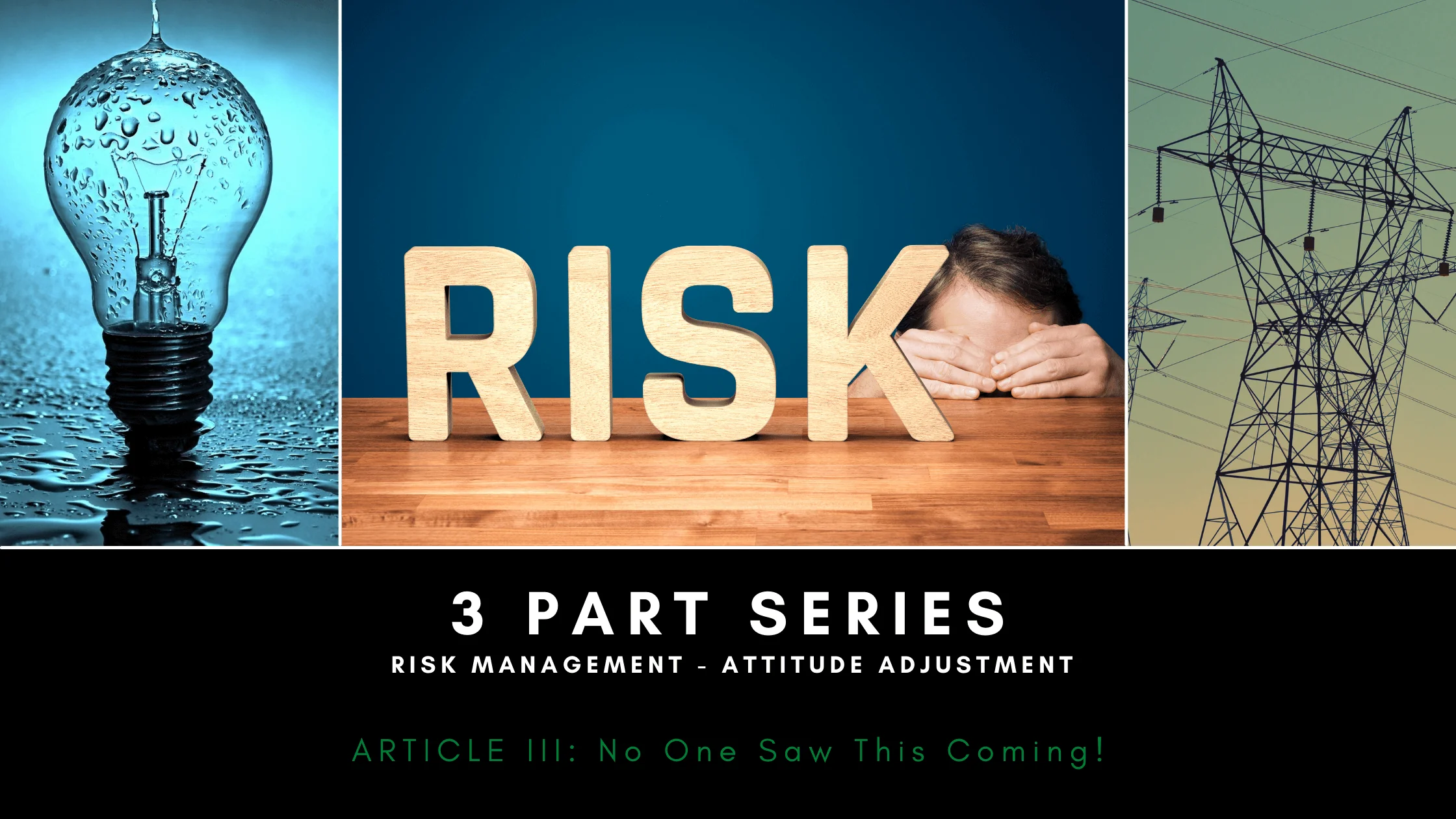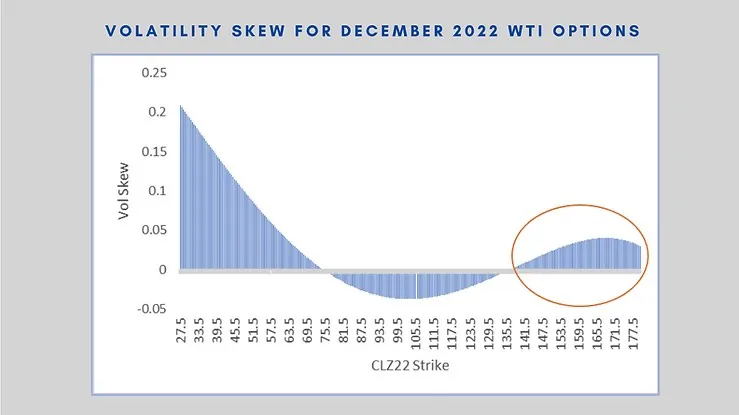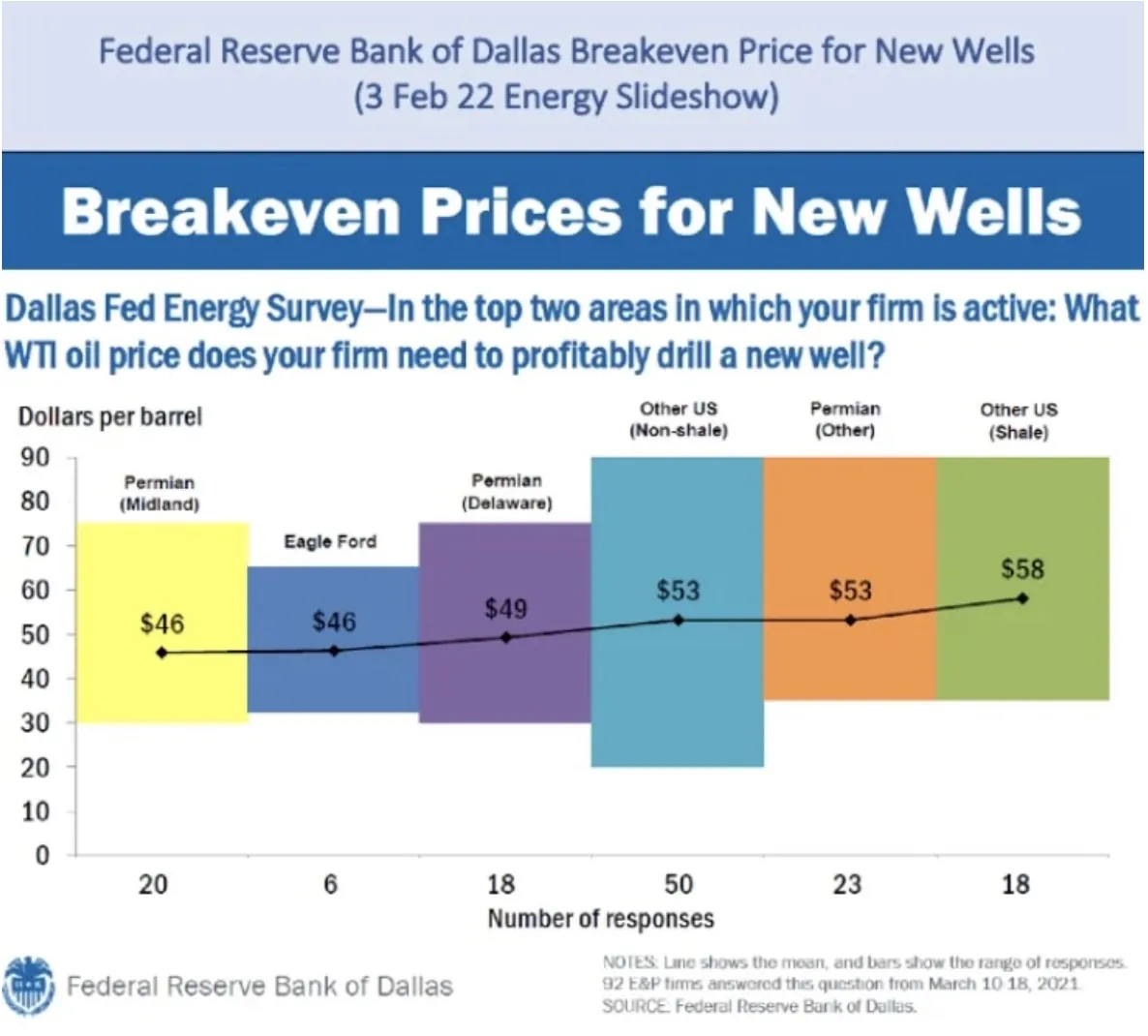In the wake of every crash, “no one saw this coming” becomes a common response. It’s an empty phrase that does little to inspire confidence and it falls apart with even minimal analysis. First, one does not have to see a catastrophic event – like a pandemic – coming to understand the potential risk and gauge the benefits of preparation relative to the cost. Standard models don’t capture very well the potential for prices to jump or dip in extreme cases. This is one reason for the volatility skew, as traders buy deeply out of the money options as hedges against these jumps in volatility, bidding up the price relative to what a smooth volatility model would suggest. The chart below depicts this notion:
Take crude oil, for example. There is demand for calls with strikes as high as $180/bbl. That doesn’t necessarily mean the buyer believes prices will reach $180. It is possible the buyer acquired this position to hedge the potential for prices to rise more quickly than the buyer can respond. These traders will benefit from the jump in volatility associated with market changes that no one sees coming, despite the standard model suggesting such a price move would occur with a less than 5% probability.
As a risk manager, do you want to be judged by your ability to foretell low probability events? One of the primary benefits of Blue Lacy’s risk framework is the relief it gives managers from just that. A consistent process judges the prevailing market opportunity relative to an entity’s stated strategy and helps inform senior leadership on whether that strategy needs to be changed, or if there are tools available to defend that strategy and proceed resolutely. Most importantly, it equips the risk manager with a message for stakeholders that demonstrates the value-add – one that is not based on an ability to prophesize price movement. Thus, I say to you, risk manager, “do yourself a favor and take action!” Make a decision that can be defended a) on its merit, b) its timeliness, and c) how it was revised as the inputs changed, rather than on its outcome alone.
The market does what it does and it is unrealistic to expect anyone to see disruptive events coming. Not only that, the normal volatility of commodity markets is high enough to ruin any well-thought-out strategy if risk managers aren’t paying attention to risk. It is the risk manager’s job to understand these risks and the relative benefits/costs of active management. Given that our clients are regularly reviewing information as it comes out, risk management can adjust incrementally to respond to major events and will have already identified the preferred tools.
Consider, again, Pioneer’s investment thesis. The Federal Reserve Bank of Dallas surveys oil and gas executives. In March of last year, they asked an interesting question, “In the top two areas in which your firm is active, at what WTI oil price does your firm need to profitably drill a new well?”
Let’s assume Pioneer’s production falls within that Permian (Midland) range of breakeven between roughly $30/bbl WTI and $75/bbl WTI. That leaves a good cushion for “no one saw this coming.” In our framework, we could quantify the risk, probability, and cost of mitigating it. To be sure, we would do so for each of Pioneer’s objectives. It might look like this:
This example is necessarily simplified, but it should demonstrate the ongoing conversation that is risk management. Each discussion focuses on potential courses of action that are informed by corporate strategic obligations and the desire for the management team to be judged on how it delivers on those promises. Regardless of potential hedging losses or gains realized, management can focus on paying down debt and paying dividends. Importantly, if the unexpected happens, management has prepared a course of action and an associated response it can communicate to stakeholders.
What do you think? I want to hear how you are approaching the question of risk in the current market environment. How often are you talking about it with stakeholders and how are you framing the discussion?
Meet the Author!
Steve Sinos, Blue Lacy Advisors, LLC
Email: Sinos@bluelacyllc.com
Phone: +1-832-413-3124
Website: www.bluelacyllc.com
Steve has spent his career in strategy, risk, trading, and investment. He works with investors to source investments in opportunistic or high growth sectors, with particular interest in early-stage companies solving clearly defined problems.
He is currently a Managing Partner with Blue Lacy Advisors LLC, giving management teams and investors confidence in their decision making by supporting strategic planning and execution, risk management, commodity trading, and market analysis.
HedgeStar Media Contact:
Megan Roth, Marketing Manager
Office: 952-746-6056
Email: mroth@hedgestar.com
Did you miss our first two articles of the Risk Management – Attitude Adjustment series? Check them out!
- Energy Risk Management – How Do You Want to Be Judged?
- Risk Management – Inherent to Strategy Execution





